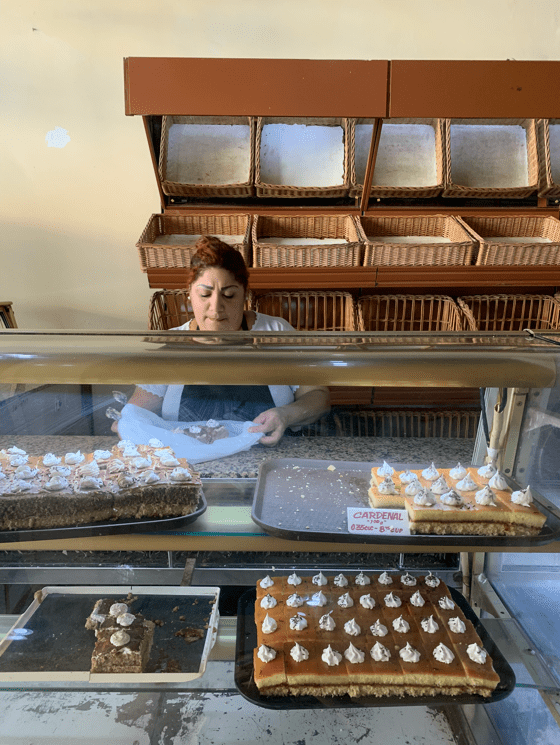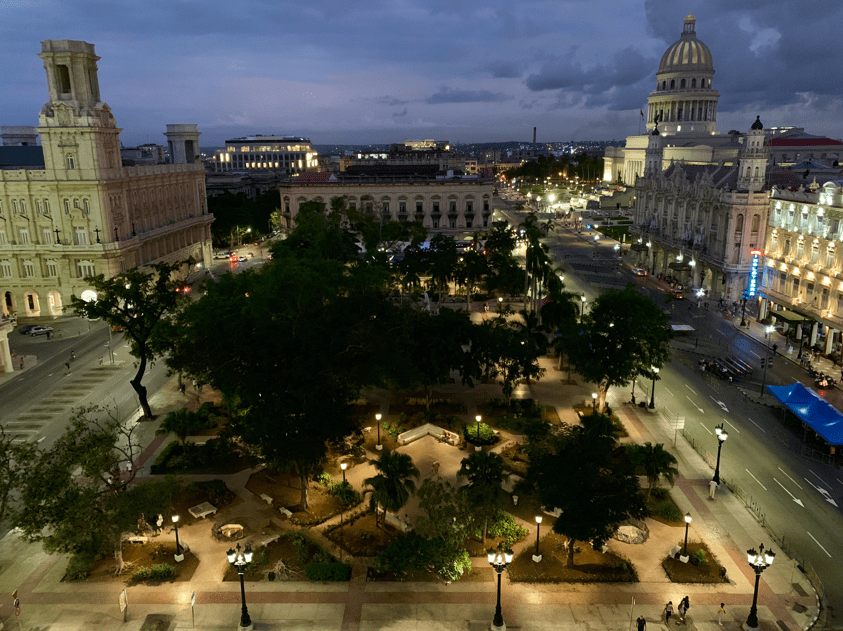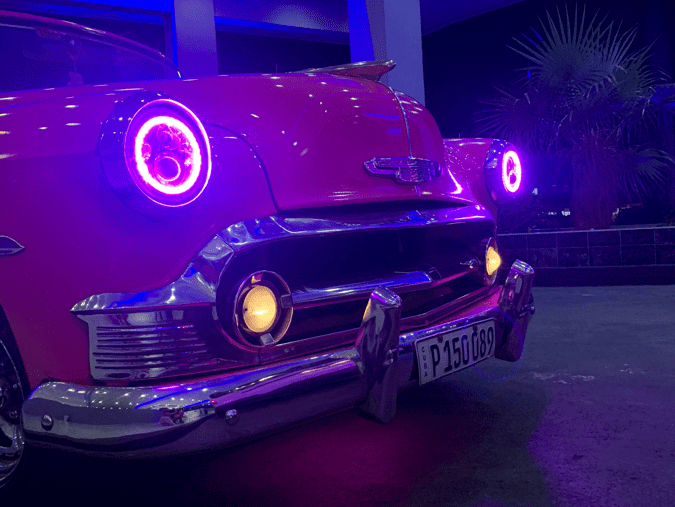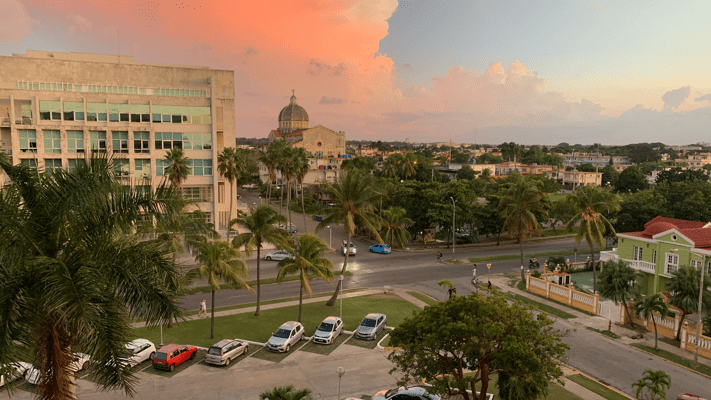Disclaimer! This overview may provoke rejection of ‘all-inclusive format’ travellers and offend those lovers of Cuba Libre cocktail.
This year has twisted vacation plans around the world, but there’s no point in falling into the gloom.
In case some summertime sadness got into you to-do list this Friday, join us to a bird’s eye view of Havana, dive into the fresh tropical waterfalls, find yourself in a Cuban village and catch the sunset on the A1 highway.
Cigars, rum, Che Guevara and hot women are the basics that are brought to mind when talking about Cuba. And there’s absolutely no wrong… Still, it’s similar to drinking just the beer head leaving all the rest in the glass. LACRUS-readers don’t do so.
In case you’re planning a trip to Cuba, then start your adventure in Havana. As for where to stay, Meliá Habana in Miramar is a great option. Clean, calm, spectacular and dully supplied with fresh tropical fruits, prosciutto, cocktail shrimps and your favourite bacon omelette waiting for you for breakfast. Car rental and shuttle bus services are also available. The office of ETECSA (Cubacel) is just across the street, so you can easily acquire a local number to keep online and go for an amazing passion fruit juice to reward yourself for enduring the queue (just some 20 cents a glass!).
Once jetlag is cured with some Melatonin, good sleep and breakfast, the Havana adventure starts. The damp heat would for sure make you sweat like in a Finnish sauna, so just be morally ready and choose the right wardrobe. And remember to grab some water: constant interruptions of supply turn buying a bottle of water into a hard quest… It’s not that easy to find the right store, and there would for sure be a queue. Planning is the first Cuban rule.
Chapter I. One Day In Havana
Through 500 years of history, Havana has kept secrets of Spanish conquerors, European merchants and adventurers, American occupiers, mafia and Bon vivant, patriotic revolutionaries, idealistic counsellors, outstanding creators and millions of little lives. All these traces have marked the image of the city: colonialism, Latin American Baroque, neoclassicism, modern style and constructivism made its architecture so unique.



Many buildings are now in very poor condition and require expensive reconstruction and maintenance. Some central neighbourhoods feel like slums… And those formerly luxurious facades shelter common lives with salaries that don’t exceed 40 USD/month. Anyway, the exceptional architecture and atmosphere provided the downtown with a UNESCO heritage status in 1982.
However, you may find all this in a tourist guide, and there’s just one day ahead. It’s worth starting in the eastern part of the downtown, in a small market next to Plaza de las Armas. A real treasure for those fans of rare and old books, authentic cinema (or propaganda) posters as well as unpretentious antiques. In case you speak Spanish, don’t miss out on haggling a bit or listening to the stories of local vendors, a ballet choreographer of the Gran Teatro de la Habana or an ex-engineer with highly liberal political views.
Walking down the streets of Havana Vieja (Havana Old Town) stop at La Casa del Abanico, a store with delicate hand fans on Obrapía Street. This sophisticated accessory would serve you well throughout the trip and make a good memory. Don’t miss the store next door either! Here you’d find an incredible tropical organic honey, with soft mango notes in the finish. Support those little Cuban bees, unless you are allergic.
Hungry? Unfortunately, there are no food-courts here. Keep drinking water, that’s what your body needs. Fidel Castro would have also approved it… Can’t miss sharing a case that takes us back to the early 1990-s when a food crisis peaked. On a TV live stream, a Cuban citizen complained to Fidel Castro about how hungry he was. El Comandante proposed him a couple of glasses of water and asked if he was still starving. The answer was negative, so Fidel Castro stated that it was just thirst, letting him go with a recommendation of no more complaints. On a serious note, the collapse of the Soviet Union hit Cuba with a notable decline in living standard and supplies.
Fortunately, there are cafes and private ‘paladares‘ that have appeared since 2010, so tourists are safe now (locals just can’t afford going there). There are nice places on Aguiar street. Le Petit is a good option… Upstairs you could do some shopping at the local designers’ corner selling linen clothes. In case some contemporary art is what you’re looking for, don’t miss the next-door gallery that collected works with various styles and degree of artistic ability.


As to coffee, don’t expect much… Cuban gastronomy and food culture leave much to desire as well. I don’t know why, but almost anything results nearly burnt, and coffee grains are extremely dark roasted. So, when choosing meals, go for something simple and grilled. Lobster, octopus, shrimp and chicken are those that cause no difficulties to local chefs. The tricky thing is meat, both in terms of quality and cooking.
Also, don’t let yourself be fooled with a mojito from La Bodeguita del Medio and simply save yourself from bad emotions. For sure that’s not the thing Hemingway used to drink in his days in Havana. Alas, the technology has been lost due to massive tourist flows. As to rum-cola, the marketable Cuba Libre drink… That’s truly an insult to the senses of the noble drink and a straight way to diabetes (or at least some extra pounds). Sorry, but that’s how it is.


Our next stop is the Capitol (El Capitolio), the architectural dominant of the city and the kilometre zero of Cuba. This exact replica of the Washington building was erected in 1929 and restored for Havana’s 500th anniversary in November 2019. By the way, the dome is covered with Russian gold. The local pride is the height of the building: a few inches more than the American original.
This area is just perfect to watch the sunset and enjoy some cocktails on the terrace of the Hotel Parque Central. This place is saturated with the smell of tobacco and a poorly maintained colonial elegance, with stunning views from the top floor. The place is accessible even for non-staying guests.
When it comes to drinks, the best choice is going ‘the simpler, the better’. Ask for an eight-year-old rum with fresh pineapple juice (and no added sugar). Complement the afternoon with a good cigar (Cohiba Siglo VI matches well) and enjoy the sun fall, watching the restless birds flying around the Central Park. If suddenly you get to notice some thick black smoke behind the Capitol, just keep calm… That’s one of the power plants lacking maintenance and fueled with Cuban crude oil.

Havana downtown is really polluted, by the way… Oldtimer cars and low-quality fuel do their job. It’s even hard to breath on windless days.
So… If you can still keep yourself, then it’s party time.
Havana is a safe town that wakes up at night, the basic thing is to keep cautious and not to wear all your Rolexes at a time. If dancing is what you are looking for, there are two main options: Fábrica de Arte Cubano (on the way back to Miramar) or the little clandestine club at Calle Aguiar. In both cases, access is charged, but in the second one, an invitation is also required. To get it, find your guide on the streets of Havana. That would make you feel diving into Hermann Hesse’s “Steppenwolf”. If you’re lucky enough, your guide would easily get to you. And then… Just let yourself go.


Choosing the Cuban Art Factory (Fábrica de Arte Cubano), you’d get to know the local creative class and ‘posh kids’, get some insight of local contemporary art, take part in a performance and see the non-socialist side of Havana. Friday or Saturday is the best day to come here, whereas the underground site on Aguiar Street is open every night (which increases the chance of meeting your guide).
Most likely, after a day like this, all you need is good sleep. As to your way back to the hotel deep at night, there is some choice: your feet or a taxi. Frankly, the streets lack lighting, and risks of twisting ankles are quite high, so you better go for the taxi option. To feel comfortable, you may need some provisional actions and ask any taxi driver you meet during the day for a card beforehand. Another option is to contact your hotel receptionist. In Cuba, money is worth more than time, so even at four in the morning, you won’t have to sleep on the Malecón.
This adventure will for sure go on: we’ll get to know how to rent a car (surpassing the shortage and waiting lists), why an LGBT-beach is better than those of Varadero, find the reason to stop buying cigars at the corner and find an ‘R2D2’ in a thousand times bigger version.



